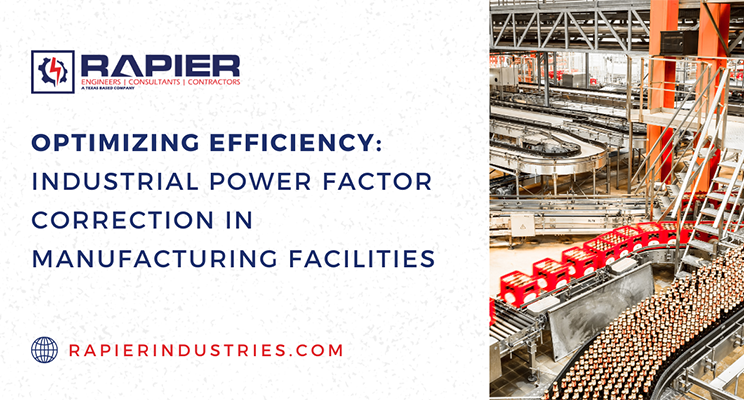In the ever-evolving landscape of industrial and manufacturing facilities, efficiency is paramount. One often overlooked aspect of energy management that can significantly impact efficiency and cost savings is power factor correction. Power factor is a measure of how effectively electrical power is converted into useful work output. In an ideal world, power factor would always be 1, indicating perfect efficiency. However, in real-world scenarios, industrial and manufacturing facilities often operate at lower power factors. This is due to the presence of inductive loads such as motors, transformers, and fluorescent lighting, which consume reactive power and can cause power factor to drop.
Here are some compelling reasons why power factor correction is necessary in industrial settings:
- Reduced Energy Efficiency: A low power factor means that a significant portion of the electrical energy supplied to your facility is wasted as reactive power. This inefficiency can lead to higher energy bills and increased carbon footprint.
- Overloaded Equipment: Low power factor can strain electrical equipment, leading to overheating, reduced lifespan, and increased maintenance costs.
- Voltage Drop: Voltage drop across the distribution system can occur with low power factors, which can affect the performance of sensitive equipment and lead to operational issues.
How Does Power Factor Correction Work?
Power factor correction is achieved by introducing power factor correction equipment, typically capacitors, into the electrical system. These capacitors generate reactive power to offset the inductive loads, thereby raising the power factor closer to 1. Here’s how it works:
- Capacitor Installation: Capacitor banks are strategically placed within the facility, either at the service entrance or distributed throughout the electrical distribution system.
- Reactive Power Compensation: The capacitors produce reactive power, which counteracts the reactive power consumed by inductive loads. This effectively reduces the demand for reactive power from the utility grid.
- Improved Power Factor: As a result, the power factor is increased, leading to a more efficient utilization of electrical energy.
Benefits of Power Factor Correction:
Now that we understand why power factor correction is necessary and how it works, let’s explore the numerous benefits it offers:
- Cost Savings: One of the most significant advantages of power factor correction is the reduction in energy bills. Utilities often charge industrial facilities for both active (real) and reactive power. By improving the power factor, you can minimize these charges, resulting in substantial cost savings.
- Enhanced Equipment Life: Power factor correction reduces the stress on electrical equipment, extending their lifespan and reducing maintenance costs.
- Optimized Voltage: With an improved power factor, voltage levels remain stable, preventing voltage drops that could disrupt operations.
- Environmental Impact: Decreased energy consumption not only saves money but also reduces your facility’s carbon footprint, contributing to a more sustainable future.
In the competitive landscape of industrial and manufacturing facilities, every efficiency improvement counts. Power factor correction, though often overlooked, can lead to significant cost savings and operational benefits. By enhancing power factor, your facility can operate more efficiently, reduce energy bills, and promote sustainability – a win-win for your business and the environment. Consider implementing power factor correction as a crucial step toward optimizing your facility’s electrical efficiency.


